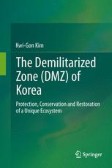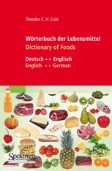Search
Search Results
-
Mercury in Fish, Crustaceans and Mollusks from Estuarine Areas in the Pacific Ocean and Gulf of Mexico Under Varying Human Impact
Mercury (Hg) is the most dangerous trace element present in the edible parts of fishes and invertebrates. With the aim of having a general view on Hg...
-
Some features of the biology of the mud shrimp Upogebia issaeffi (Balls, 1913) (Decapoda: Upogebiidae) from the subtidal zone of Vostok Bay, Sea of Japan
The study of the biology of the mud shrimp Upogebia issaeffi (Balss, 1913) from the subtidal zone of the Vostok Bay (Peter the Great Bay, Sea of...
-
The potential for aquaculture of the bearded horse mussel (Modiolus barbatus) and Noah’s Ark shell (Arca noae) in southern Croatia
To assess the potential of the bearded horse mussel ( Modiolus barbatus ) and Noah’s Ark shell ( Arca noae ) for aquaculture in southern Croatia, we...

-
Pathways of formation of the fauna of the Solovetsky Archipelago, the White Sea, Northwest Russia
The fauna of the Solovetsky Archipelago represents an extremely depleted and reduced variant of the continental northern boreal one. The level of its...
-
Biodiversity on the brink: an assessment of conservation strategies for North American freshwater mussels
The North America freshwater mussel fauna has suffered an inordinately high recent extinction rate, and the small size and isolation of many...

-
The Phylum Planctomycetes
The Planctomycetes is a bacterial phylum with multiple distinctive, and often unique, morphological, structural, metabolic, and genomic...
-
Habitats in the DMZ Area
There is much variation in the way DMZ surveys have been carried out, ranging from what has been recorded to how the communities were identified....
-
Habitat-specific feeding by cownose rays (Rhinoptera bonasus) of the northern Gulf of Mexico
Past studies have suggested that increases in cownose ray ( Rhinoptera bonasus ) abundance may pose problems for fisheries management due to their...

-
Isolation and characterization of polymorphic microsatellite loci in the grand jackknife clam Solen grandis (Bivalvia: Veneroida)
The grand jackknife clam Solen grandis (Dunker, 1861) is an overexploited bivalve species. In order to promote a conservation program for this...
-
Genetic variation and population structure of the carpet shell clam Ruditapes decussatus along the Tunisian coast inferred from mtDNA and ITS1 sequence analysis
Surveys of allozyme polymorphisms in the carpet shell clam Ruditapes decussatus have revealed sharp genetic differentiation of populations. Analysis...
-

-

-

-

-
Semi-submersible rigs: a vector transporting entire marine communities around the world
A virtually intact subtropical reef community (14 phyla, 40 families and 62 non-native taxa) was associated with a rig under tow from Brazil that...

-
Reduced performance of native infauna following recruitment to a habitat-forming invasive marine alga
Despite well-documented negative impacts of invasive species on native biota, evidence for the facilitation of native organisms, particularly by...

-
Antimicrobial, antitumor and in vivo cytotoxicity of actinomycetes inhabiting marine shellfish
Sixty-three actinomycete strains isolated from the marine shellfish Donax trunculus anatinus were phenotypically identified as ten genera, in...

-
The History of Horseshoe Crab Research and Conservation in Japan
Scientific studies of the Japanese horseshoe crab, Tachypleus tridentatus, from the Seto Inland Sea have been published for nearly a century,...
-
Charting Evolution’s Trajectory: Using Molluscan Eye Diversity to Understand Parallel and Convergent Evolution
For over 100 years, molluscan eyes have been used as an example of convergent evolution and, more recently, as a textbook example of stepwise...

-
The Analysis of Copper, Selenium, and Molybdenum Contents in Frequently Consumed Foods and an Estimation of Their Daily Intake in Korean Adults
This study aimed to analyze the amounts of copper, selenium, and molybdenum among trace minerals in foods and to evaluate their daily intakes in...
